Edmond Machtensstadion
The Edmond Machtensstadion has witnessed an admittedly complex but fascinating story.
A look back on almost a century of football adventures in Brussels.

1920-1973 : the Daring
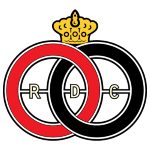 The story, however, started in the simplest of ways.
The story, however, started in the simplest of ways.
A club, the Daring Club Brussels, is looking for new ground where it can build a stadium worthy of its ambitions. Founded in 1895
and affiliated with the Belgian federation two years later, it waited until 1903 before registering for the championship. In the
meantime, the Daring has merged with Brussels FC, Sporting Molenbeek, Skill FC Brussels and US Brussels. The mergers will become
an endemic evil for the boarder of the future Edmond Machtensstadion. As is often the case with clubs founded in the 19th century,
it is a multi-sport club and football is only one section of the Daring.
As soon as it got started, the Daring became a serious competitor for the great Union Saint-Gilloise and celebrated its first
title in 1912. Four other titles were won by the Daringmen : 1914, 1921, 1936 and 1937. The Belgian Cup was won in 1935 facing
Lyra, in the Daring stadium, facing only 4,000 people.
After playing on the site of the future Basilica of Koekelberg and at the Jetsesteenweg, the Daring sets its sights on a large
field at Charles Malisstraat, in Sint-Jans-Molenbeek. There, the club built in 1920 a real sports complex, far ahead of its time.
In addition to the stadium, the site includes an athletics track, a hockey field, tennis courts and, more surprisingly, a solarium.
The stadium is simply named after the street where it is located, namely Charles Malisstadion, after a former club president and
councilor for Molenbeek. The stands and terraces can accommodate around 20,000 people.
In 1939, the stadium changed its name to the Oscar Bossaertstadion, named after a player and chairman of the Daring.
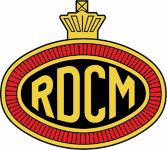 Unfortunately, the hour of glory has already passed and the World War II has put an end to the domination of the club of Molenbeek.
Like its great rival of the Union Saint-Gilloise, the Daring becomes unstable and struggles to stay in Division 1. Two European
qualifications for the Cup of Fair Cities are still obtained in 1966 and 1969, as well as a last Belgian Cup final in 1970, against
Club Brugge. At this time, the Daring is in Division 2 and the difference in level doesn't allow a miracle : Brugege crush the Daring
by 6-2 at the Heizselstadion.
Unfortunately, the hour of glory has already passed and the World War II has put an end to the domination of the club of Molenbeek.
Like its great rival of the Union Saint-Gilloise, the Daring becomes unstable and struggles to stay in Division 1. Two European
qualifications for the Cup of Fair Cities are still obtained in 1966 and 1969, as well as a last Belgian Cup final in 1970, against
Club Brugge. At this time, the Daring is in Division 2 and the difference in level doesn't allow a miracle : Brugege crush the Daring
by 6-2 at the Heizselstadion.
Increasingly empty stands and merciless competition from the new great Brussels rival, namely Anderlecht, has plunged the Daring into a financial crisis from which it hasn't recovered. The glorious number 2 resigned in 1973 and was struck off by the Belgian federation. The Daring Club no longer exists and the Oscar Bossaertstadion is now free to all tenants.
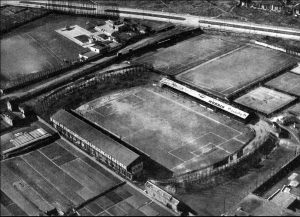
1973-2003 : the RWDM
 Unable to leave such an infrastructure unoccupied, the municipality of Molenbeek is looking for a club capable of effectively occupying
the Oscar Boosaertstadion. At the same time, the stadium became the Edmond Machtensstadion, named after the mayor of Sint-Jans-Molenbeek
between 1939 and 1978. He was also resistant, Minister of State and senator for the Socialist Party of Belgium.
Unable to leave such an infrastructure unoccupied, the municipality of Molenbeek is looking for a club capable of effectively occupying
the Oscar Boosaertstadion. At the same time, the stadium became the Edmond Machtensstadion, named after the mayor of Sint-Jans-Molenbeek
between 1939 and 1978. He was also resistant, Minister of State and senator for the Socialist Party of Belgium.
On the other side of the capital, in Woluwe, another club is in trouble. Royal Racing White can no longer fill the Fallonstadion and the
budget is in the red. Club resulting from a merger between the prestigious Racing Brussels (number 6) and the Royal White Star Athletic Club
(number 47), Racing White agrees to move to Molenbeek, to add the name "Daring" to its name and to add red to these official colors.
Racing White Daring of Molenbeek (number 47) was born. Very quickly, the club comes back to life and supporters are numerous back at the
stadium. The management, led by Jean-Baptiste l'Ecluse, undertakes to modernize the old Daring stadium and become Belgian Champion, no
more no less ! The small side stand is demolished and replaced by a hypermodern construction comprising more than 4,500 seats and a
thousand standing places. The stadium can therefore accommodate 27,000 people.
Sportingly, and against all odds, the RWDM won the supreme title in 1975, only two years after the move of Racing White.
In the process, the RWDM made the semi-finals of the 1976-1977 UEFA Cup and would only be stopped by Athletic Bilbao (Spain). The clubs
eliminated by the Brussels residents are successively Næstved BK (Denmark), GTS Wisła Kraków (Poland), FC Schalke 04 (FRG) and
Feyenoord Rotterdam (Netherlands). The RWDM was already brandishing the UEFA Cup and it has to be said that it was very short.
Athletic Bilbao only qualified for their away goal (1-1 and 0-0). Bilbao will be beaten in the final by Juventus (1-0 and 2-1). The
other qualifications took place in 1973-1974, 1974-1975, 1977-1978 and 1980-1981 for the UEFA Cup and 1975-1976 for the Champions Club Cup.
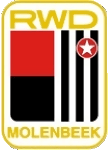 These quick and unexpected successes blinded L’Ecluse and he set out to overthrow Anderlecht and take his place as the biggest
Belgian club. But if the ascent was rapid, the fall was all the more brutal. Having shared the presidency with Jean Gooris, the
latter left the club in 1977 following a dispute with L’Ecluse. The club then experienced its first financial problems. Worse, the
construction company of L’Ecluse went bankrupt in 1986 following late payments from the public authorities for which L’Ecluse worked
(notably the Brussels metro). Ruined, L’Ecluse withdrew and the club wondered what would become of it without its sponsor-president.
Bankruptcy was declared in 1986.
These quick and unexpected successes blinded L’Ecluse and he set out to overthrow Anderlecht and take his place as the biggest
Belgian club. But if the ascent was rapid, the fall was all the more brutal. Having shared the presidency with Jean Gooris, the
latter left the club in 1977 following a dispute with L’Ecluse. The club then experienced its first financial problems. Worse, the
construction company of L’Ecluse went bankrupt in 1986 following late payments from the public authorities for which L’Ecluse worked
(notably the Brussels metro). Ruined, L’Ecluse withdrew and the club wondered what would become of it without its sponsor-president.
Bankruptcy was declared in 1986.
Johan Vermeersch enters the scene at the same time. A great admirer of L’Ecluse and also a building contractor, he tried to take control
of the RWDM in 1986. But he failed. He finally joined the club as main sponsor in 1993. Directly, he undertook to raze the old stand
of 1920 (yet still in good condition) and replace it with a new stand of 4,500 seats and 600 business seats. Inspired by Anderlecht,
he believed that this new infrastructure would provide RWDM with a large and stable source of income. But the cost of this stand
(6,250,000 €) turned out to be impossible to pay for the RWDM. The club, like the Daring at the time, will not rise from this much too
heavy burden. The club will die for 10 years. These works will make lose many places and the capacity decreases to 15,266 places. The
old popular north terrace (dating from 1920) is closed and the popular south terrace (reserved for visitors) is rebuilt.
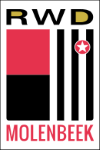 Sportingly, however, a final European qualification was won in 1996-1997 against the Turkish Beşiktaş JK (0-0 and 0-3) in the UEFA Cup.
Vermeersch left the club but that did not change the dire situation of the club.
Sportingly, however, a final European qualification was won in 1996-1997 against the Turkish Beşiktaş JK (0-0 and 0-3) in the UEFA Cup.
Vermeersch left the club but that did not change the dire situation of the club.
After a final season in Division 1 (with an honorable 10th place), the RWDM cannot obtain its professional license and is relegated
directly to Division 3. It was the stampede and everyone has left the club, except the supporters. Finally, the number 47 was written
off in 2003.
The Edmond Machtensstadion is once again unoccupied.
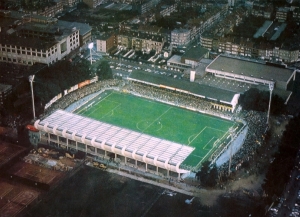
2003-2014 : the FC Brussels
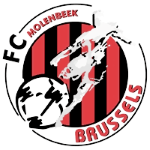 Vermeersch, not wanting to stay on the failure of the RWDM, moved the KFC Strombeek (number 1936) from the Flemish suburb of
Brussels to Sint-Jans-Molenbeek. The club changes its name to become the Football Club Molenbeek Brussels Strombeek. The club
quickly moved from Division 3 and to Division 1 but only managed to stay at the highest level for 4 years. Relegation to D2 punishes
the 2007-2008 season.
Vermeersch, not wanting to stay on the failure of the RWDM, moved the KFC Strombeek (number 1936) from the Flemish suburb of
Brussels to Sint-Jans-Molenbeek. The club changes its name to become the Football Club Molenbeek Brussels Strombeek. The club
quickly moved from Division 3 and to Division 1 but only managed to stay at the highest level for 4 years. Relegation to D2 punishes
the 2007-2008 season.
Shunned by supporters of the late RWDM, the Edmond Machtensstadion remains empty compared to a fairly recent past. These same supporters
continue to wear RWDM jerseys or sing in his honor. FC Brussels can't get into the hearts of the fans.
Finally, Vermeersch stops the costs and places the club in liquidation. No buyer appears and the club is struck off on June 24, 2014.
At the same time, a new club claiming to be the successor to the RWDM was founded in 2003. But it didn't experience any success and quickly fell back to the lowest level of Belgian football.
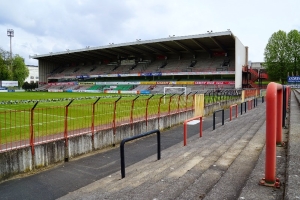
2014-2018 : the White Star
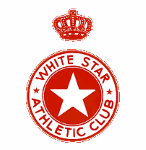 Once again, the Sint-Jans-Molenbeek stadium was deserted. Once again, a club has left its locality to come and occupy the
Edmond Machtensstadion. And as in 1973, this is the White Star !
Once again, the Sint-Jans-Molenbeek stadium was deserted. Once again, a club has left its locality to come and occupy the
Edmond Machtensstadion. And as in 1973, this is the White Star !
But it’s a whole different club from the old White Star AC (registration number 47). Here, it is a club originally called Kappelleveld FC
and has the registration number 5750. The first move takes place and the club moves from Evere to Sint-Lambrechts-Woluwe. Wanting to
recover the historic heritage of the White Star AC, the club obtained the Belgian federation to change its name and will now be
Royal White Star Woluwe FC.
 But like in the days of Racing White, the Fallonstadion remains empty and going to Molenbeek seems to be a good opportunity for
the White Star FC. The club changed its name once again to become the Royal White Star Brussels. The club reached Division 2 and
everyone believed at the time that this umpteenth tenant of the Edmond Machtensstadion would last. And as with the other clubs,
the end is near at hand.
But like in the days of Racing White, the Fallonstadion remains empty and going to Molenbeek seems to be a good opportunity for
the White Star FC. The club changed its name once again to become the Royal White Star Brussels. The club reached Division 2 and
everyone believed at the time that this umpteenth tenant of the Edmond Machtensstadion would last. And as with the other clubs,
the end is near at hand.
But as of 2015, a new club has just set up at the Edmond Machtensstadion : the RWDM (see next chapter) ! After numerous quarrels between
the two clubs, the White Star is finally ejected from the stadium and forfeits for the 2018-2019 season. Service number 5750 is struck off.
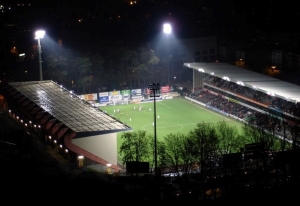
Since 2015 : the new RWDM
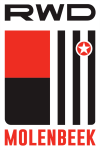 Definitely, the ghosts of the former gone clubs like to come and haunt the Edmond Machtensstadion.
Definitely, the ghosts of the former gone clubs like to come and haunt the Edmond Machtensstadion.
This version of the RWDM is actually a project to revive the 1975 Belgian Champion.
To do this, a registration number must be obtained and the leaders of the new RWDM found it in Flanders, in Wetteren. This small
town had two football clubs : RRC Wetteren-Kwatrecht (registration number 95) and Koninklijke Standaard Wetteren (registration
number 5479). A merger is made to form the Royal Football Club Wetteren and thus frees the number from Standaard. The new RWDM
recovers the registration number and the sporting position of the deceased Standaard, namely a place in Promotion (fourth division).
In the meantime, the Belgian federation to grant the club the right to use the logo of the old number 47. As a result, the club has
recovered a large number of supporters from the former RWDM.
For once, the future looks a little brighter for the new tenant of the Edmond Machtensstadion.
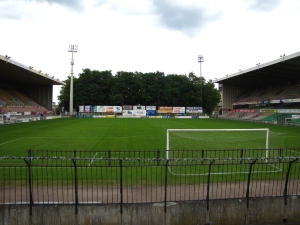
A multitude of clubs for a single stadium
If the clubs have followed one another at an infernal pace at the Edmond Machtensstadion, it has on the other hand experienced
little evolution during its century of existence.
If nothing remains of the stadium from 1920, there have been no major modifications since 1993.
The stadium now has 12,266 seats and is fully compliant with the requirements of Division 1. For a long time, a stand construction
project in place of the former popular north terrace existed but the stadium doesn't (yet ?) enough spectators to justify such a construction.
Pictures
Edmond Machtensstadion
The Daring stadium, when it opened in 1920.
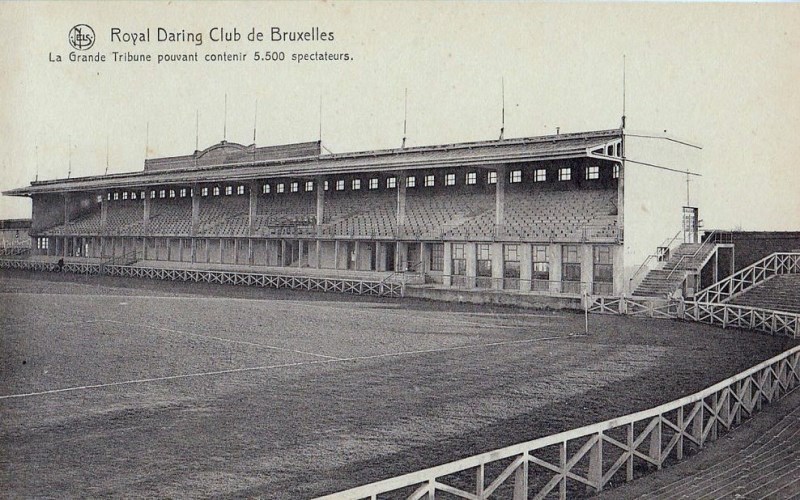
Edmond Machtensstadion
“The Grandstand can hold 5,500 spectators."
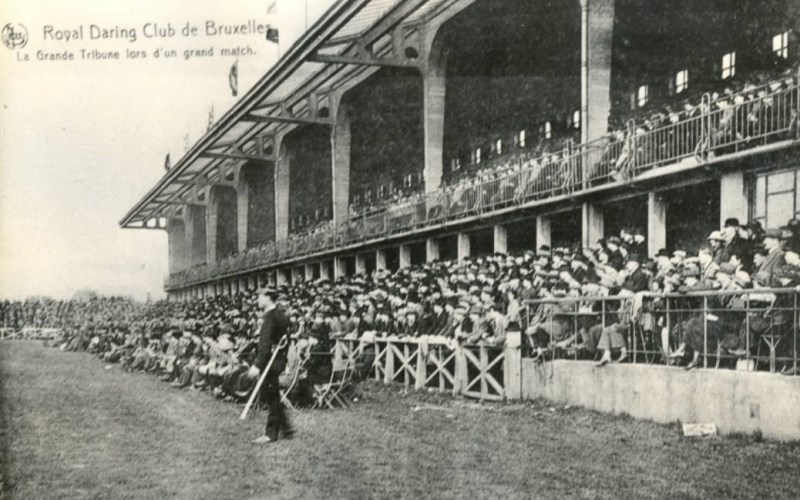
Edmond Machtensstadion
This daring construction will remain in service until 1993.
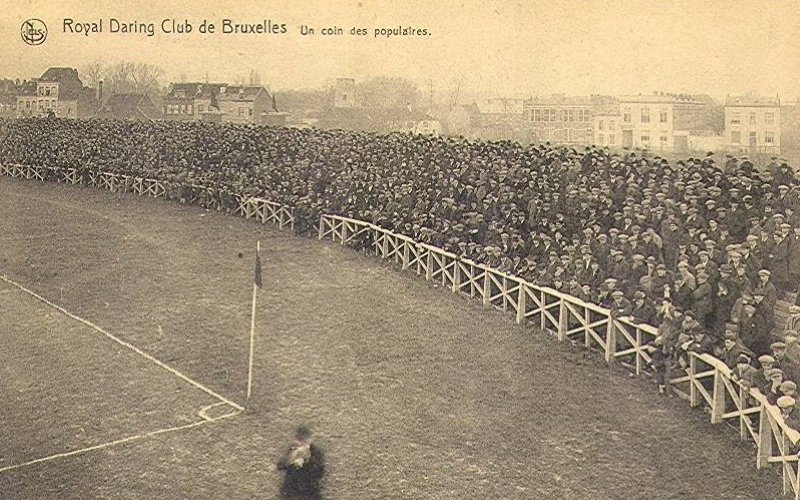
Edmond Machtensstadion
One of the terraces at the end of the ground, will disappear in the 1990's : one replaced by new terrace, the other by a wall of advertisements.
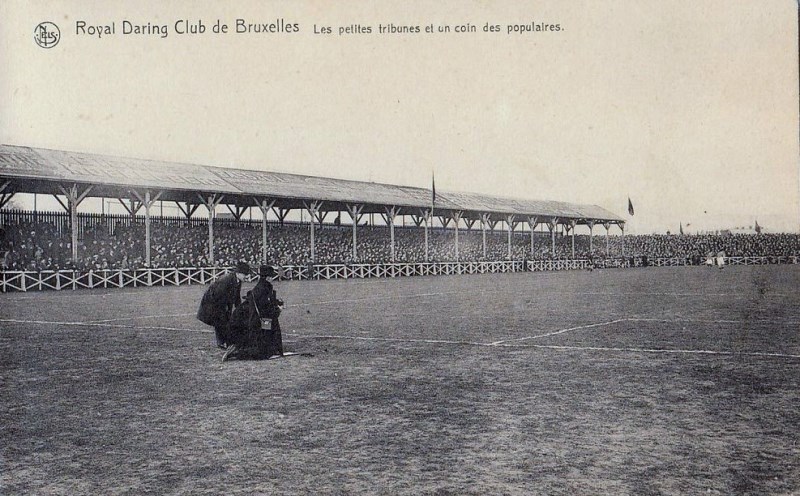
Edmond Machtensstadion
This stand has been replaced in 1973 by the famous stand l'Ecluse.
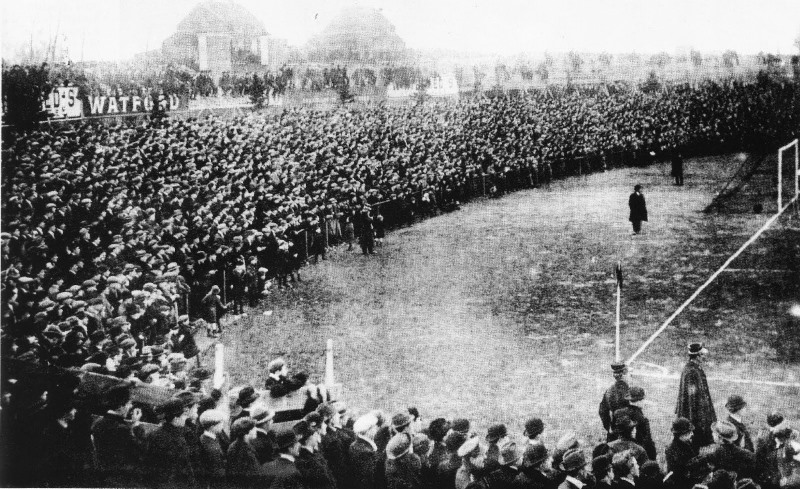
Edmond Machtensstadion
The crowded stadium, during the 1920-1921 season. The derby against the Union has brough these two clubs into Brussels folklore through the play Bossemans et Coppenolle.
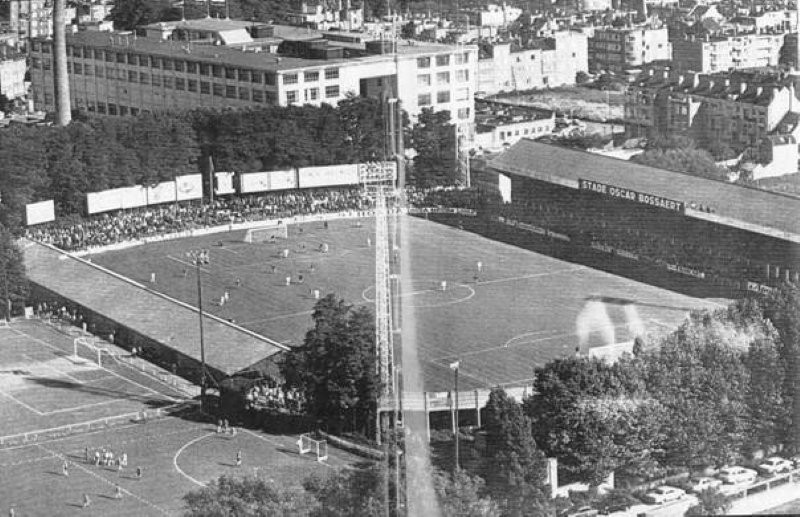
Edmond Machtensstadion
Oscar Bossaertstadion in 1970. Unchanged for 50 years.
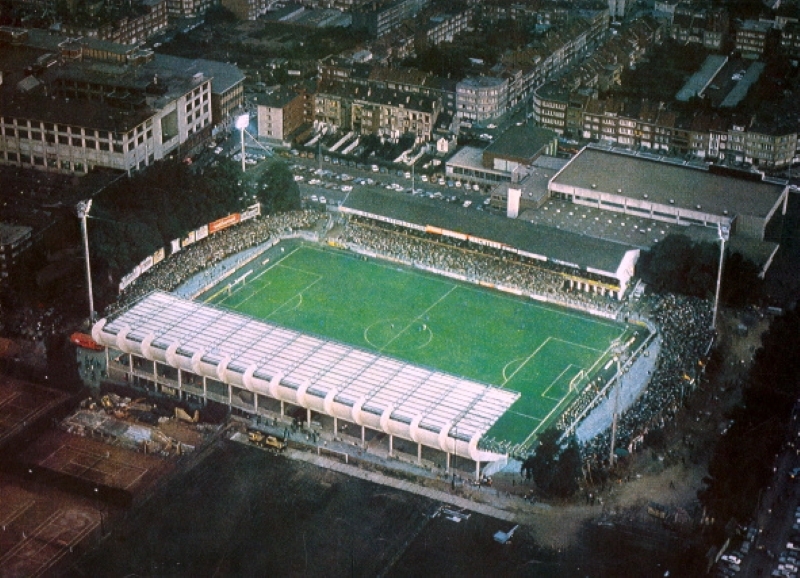
Edmond Machtensstadion
4 years later, the stadium changed its appearance and its name. The new stand brings capacity to 27,000 seats.
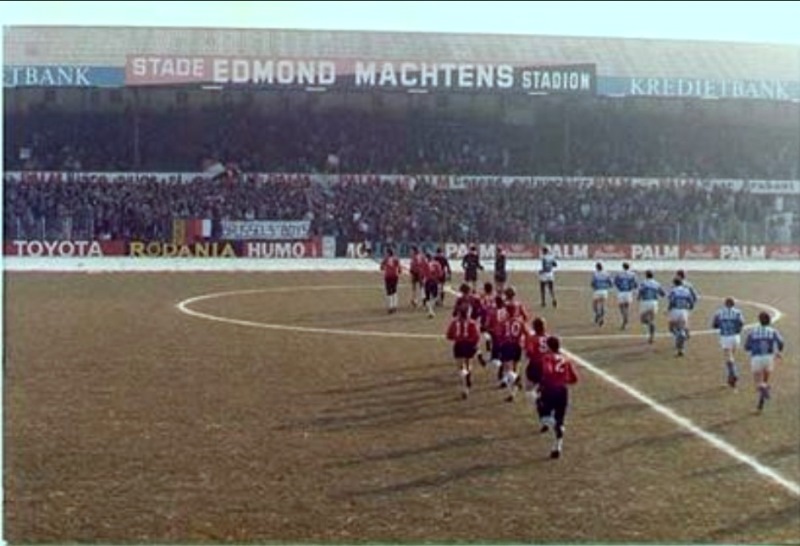
Edmond Machtensstadion
Edmond Machtensstadion crowded during a match in 1985-1986.
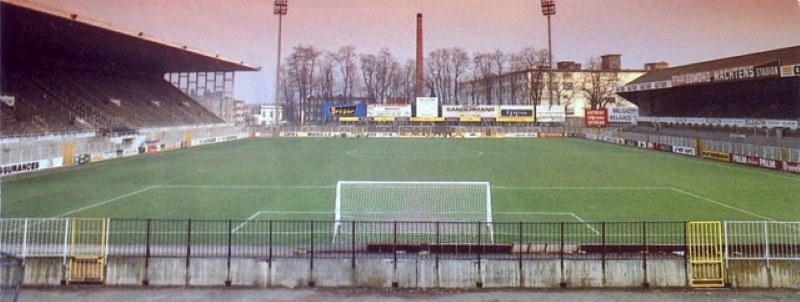
Edmond Machtensstadion
Last year for the old Daring stand in 1992.
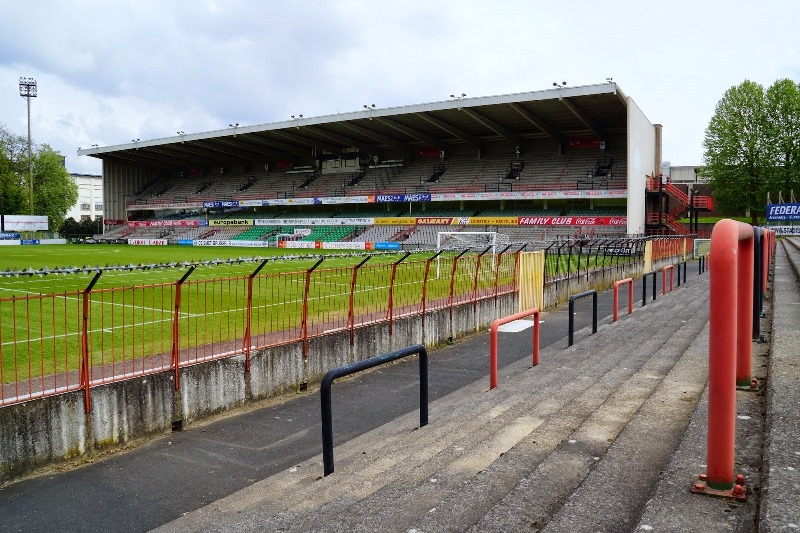
Edmond Machtensstadion
A new stand and new terrace in 1993. These too expensive works has sent the RWDM to hell.
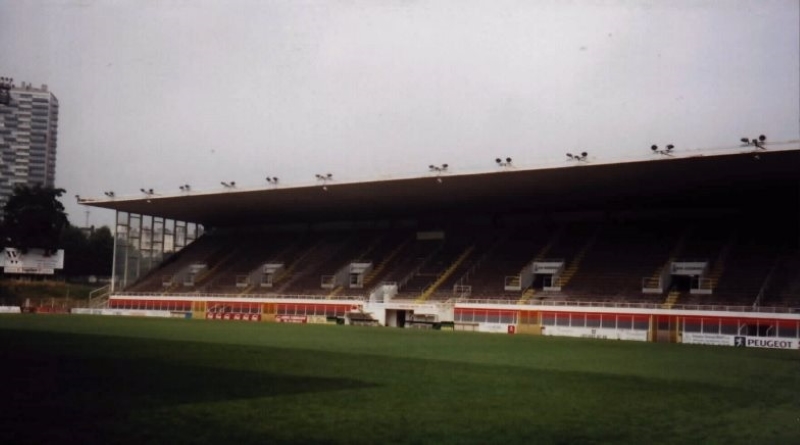
Edmond Machtensstadion
The L’Ecluse stand will have to wait a few more years before being refreshed.
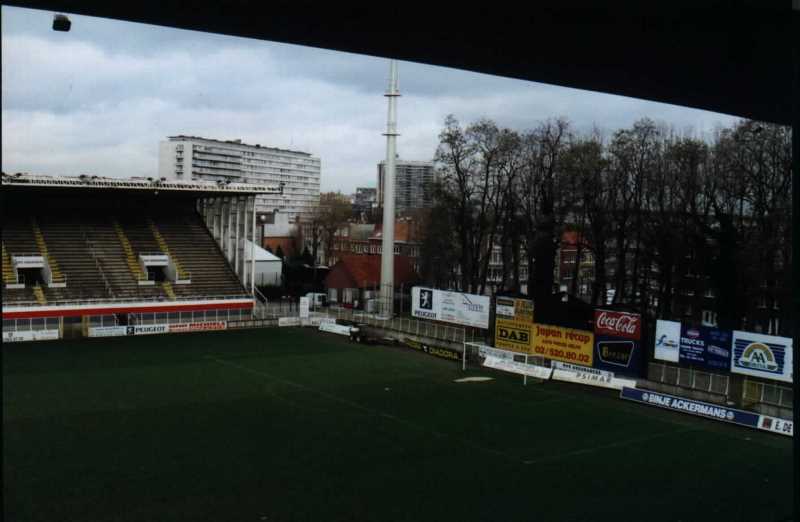
Edmond Machtensstadion
The popular north terrace, them, has disappeared in 1996 and has been replaced by a wall of advertisements. The capacity drops to 15,266 places.
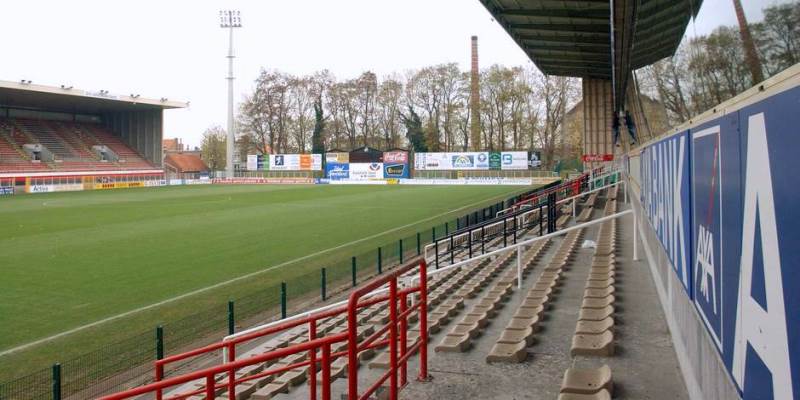
Edmond Machtensstadion
The Edmond Machtensstadion refreshed in the early 2000's.
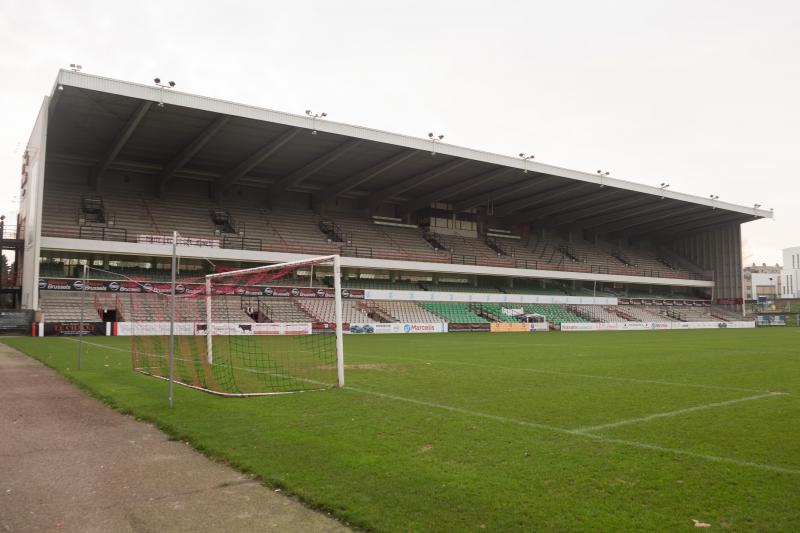
Edmond Machtensstadion
The Raymond Goethals stand.
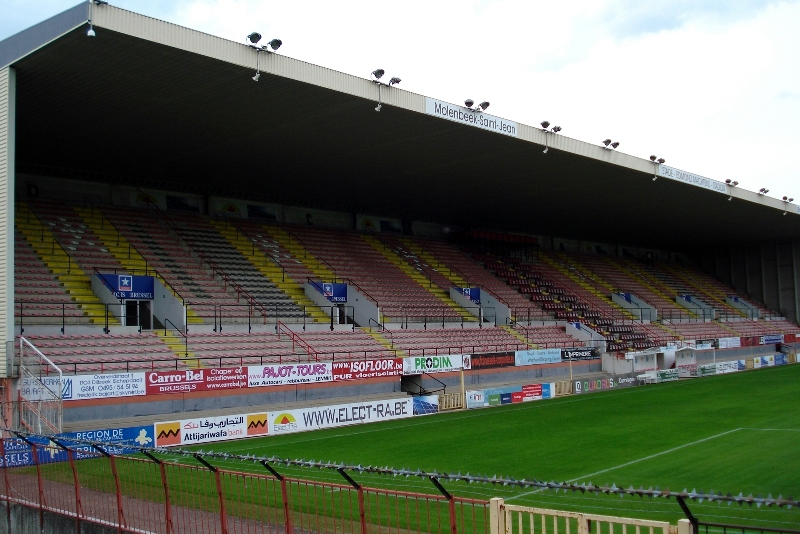
Edmond Machtensstadion
The L’Ecluse stand, with its new seats. For security reasons, the capacity drops further to 12,266 places.
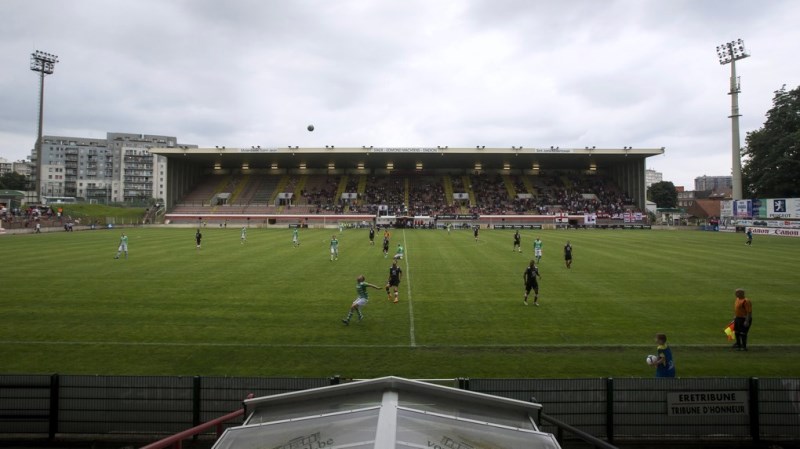
Edmond Machtensstadion
A modern and comfortable stadium, but no great team to occupy it.
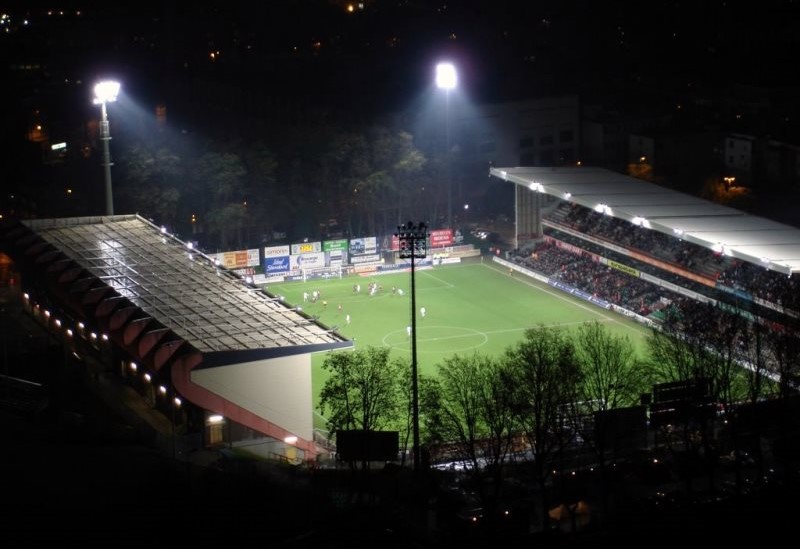
Edmond Machtensstadion
The old Daring stadium on a match night.
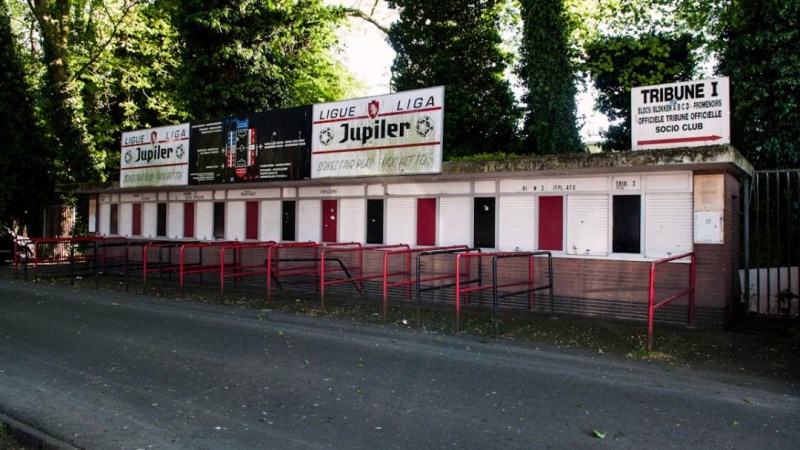
Edmond Machtensstadion
The ticket offices, at the feet of the ex-popular north terrace.
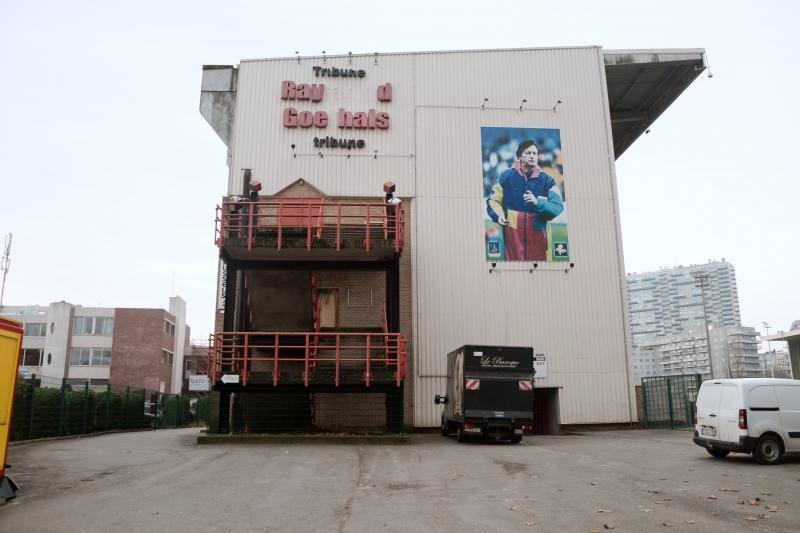
Edmond Machtensstadion
Facade of the Raymond Goethals stand.
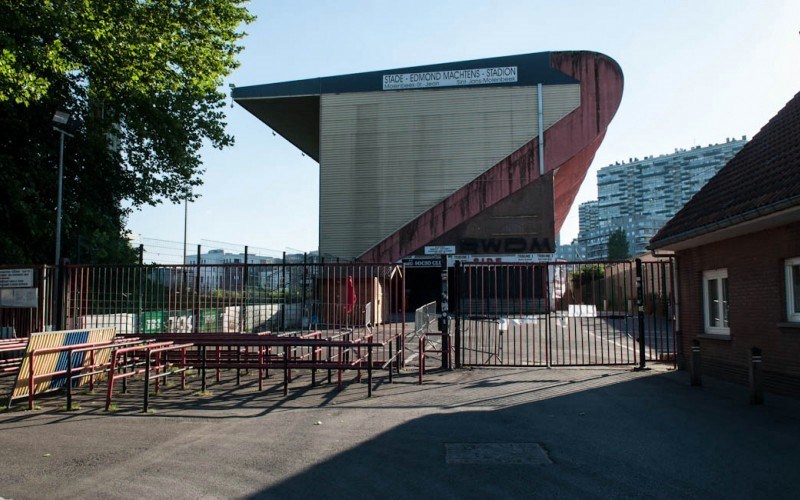
Edmond Machtensstadion
Facade of the L’Ecluse stand.
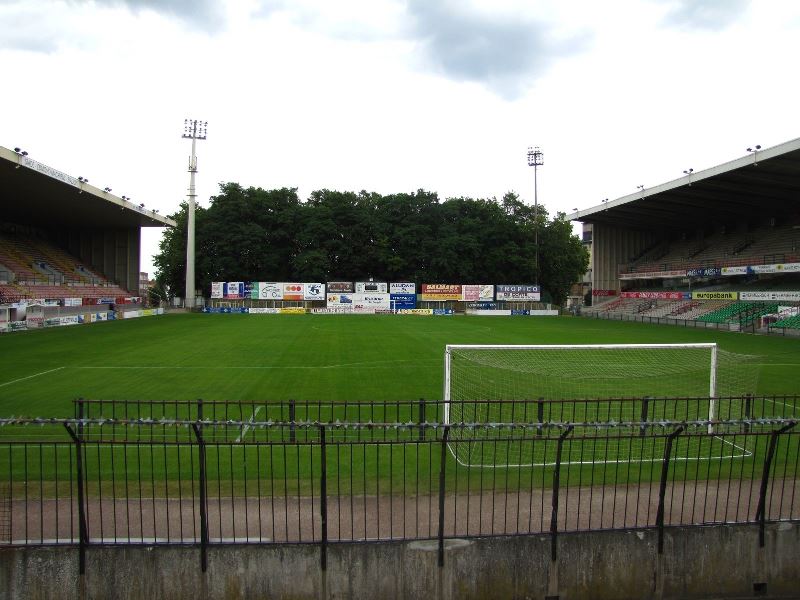
Edmond Machtensstadion
Yet another club in Sint-Jans-Molenbeek. Will the new RWDM last over time ?
Note
-
This article comes from my old website www.foothisto.be but was never published.
It has been somewhat modified and updated recently (May 2020).
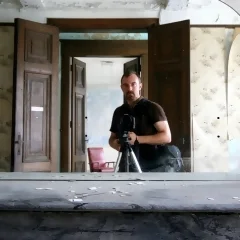
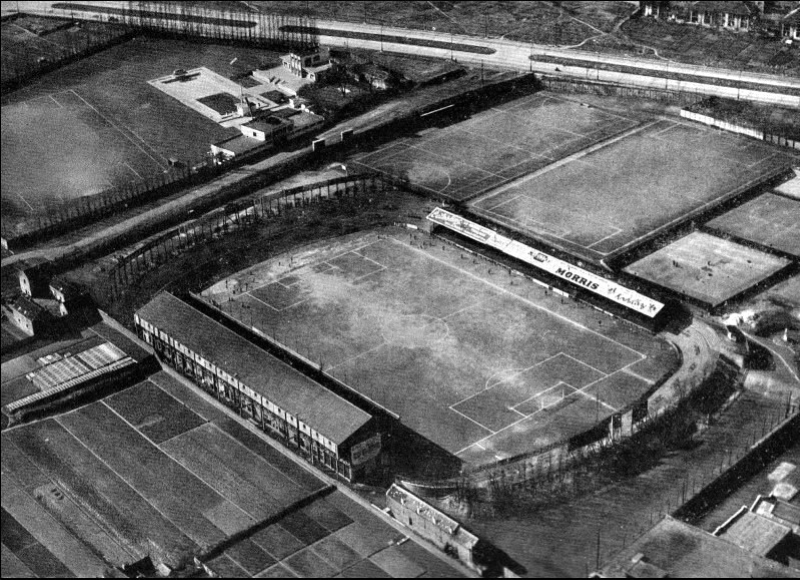
Soyez le premier & devenez quelqu’un de bien • Be the first & become a good person